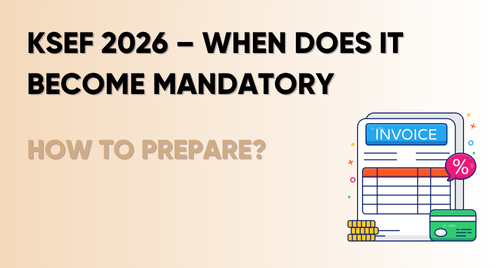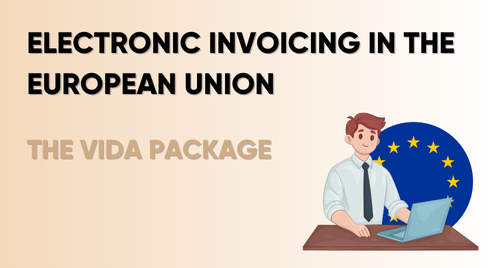(1).png)
Preparation for transfer pricing audit
Transfer pricing audits are an issue of interest to tax authorities. Increasingly,
taxpayers operating in corporate groups are facing TP audits. While a few years ago,
hardly anyone worried about audits in this regard, the number of TP audits has been
increasing in recent years. This is evidenced by the data published by the Ministry of
Finance - not only is the number of audits increasing year after year, but, more
importantly, their effectiveness is growing, i.e. the tax authorities are estimating
higher and higher amounts of CIT to be surcharged by taxpayers.
Transfer pricing control - what is worth knowing?
A transfer pricing audit usually takes place, as it were, on the occasion of a CIT
audit. It is rare for controllers to come to an audit in only one area of CIT - in this
case, transfer pricing.
During a CIT audit, the auditors have the right to call on the taxpayer to submit
transfer pricing documentation. The taxpayer has 7 days to provide such
documentation. A taxpayer is not always obliged to prepare transfer pricing
documentation, e.g. if its transactions do not exceed statutory thresholds, or if the
taxpayer undertakes transactions only with related parties based in Poland and
benefits from an exemption from the obligation to prepare transfer pricing
documentation. However, this does not mean that the authority will not control
transfer pricing. On the contrary - the more the authority will want to check whether
the taxpayer settles on market terms with related parties. This is because it should
be emphasized that the absence of the obligation to prepare transfer pricing
documentation does not exempt the taxpayer from the obligation to determine
transfer prices in accordance with the arm's length principle.
What transactions do tax authorities love to audit?
The most difficult ones... that is, those in which establishing the extent of their
provision and market prices is difficult due to the lack of available market data.
Hardly, the authorities are looking particularly closely at those transactions that are
hard to prove that they took place at all. We are talking about intangible transactions,
such as the acquisition of management services from group entities (so-called
management fees). Taxpayers often receive invoices from the group at the end of
the year or during the year for management services and don't even fully know what
they are being charged for. Tax authorities are aware of this, and if the taxpayer is
unable to prove the scope and type of services purchased, the authorities question
the amount of remuneration paid to the group. The Polish taxpayer must "throw out"
from the tax deductible expenses all or part of the remuneration paid to the group.
Another "sensitive" transaction may be a trademark fee. The authorities may
question the amount of the license fee, which is very difficult to determine due to the
fact that the valuation of a trademark depends on a great many factors, often
evaluative. Fiscal authorities may also question whether paying a license fee is
justified at all, i.e. whether the Polish company actually obtains added value in the
form of increased revenues due to the use of the trademark and should thus pay
remuneration to the group for the use of such a mark.
With the above in mind, taxpayers who purchase intangible services or license fees
from a group should especially prepare for transfer pricing audits. Authorities have
tools through which they can see whether a taxpayer has such transactions or not -
first and foremost, we are talking about the TPR information filed with the authority,
where the authority sees "in black and white" the types of controlled transactions
entered into by the taxpayer.
How to prepare for a TP inspection?
Here are some "tips" on how to prepare for a transfer pricing audit.
1. Determination of transfer prices market-based prior to the conclusion of the
transaction
Taxpayers, at the stage of entering into related party transactions, forget to
determine ex ante under what conditions a transaction would be entered into
between unrelated parties and do it ex post, or expect advisory firms preparing
comparative analyses to align the market result with the taxpayer's result. In practice,
the correct approach is the opposite - it is the taxpayer's result that should match
market conditions. Therefore, it is worthwhile even before the conclusion of the
transaction to establish transfer prices in accordance with the arm's length principle
and, for example, prepare a transfer pricing policy for the transaction.
2. Fulfillment of TP's compliance obligations on time
The taxpayer should fulfill compliance TP obligations after the end of the tax year.
First and foremost is the preparation of transfer pricing documentation for
transactions that exceed the statutory thresholds. In addition, TPR information and a
statement on the preparation of TP documentation and on the application of arm's
length pricing in transactions with related parties and also with "tax havens" should
be submitted on time.
3. Audit of TP obligations for previous years
A taxpayer who is unsure whether it has properly complied with transfer pricing
obligations for previous tax years, especially whether transfer prices have been set
at arm's length, should analyze those obligations. A TP audit can be done on one's
own or outsourced to an independent tax firm. Tax authorities look particularly at related party settlements for the earliest possible tax years that are not time-barred
due to the possibility of earning the highest interest.
In summary, TP audits are becoming more frequent and more effective. Tax
authorities are also showing a lot of knowledge in this area, employing TP
specialists, in view of which polemics with them can be difficult. Therefore, it is
worthwhile to prepare early for a TP audit.










